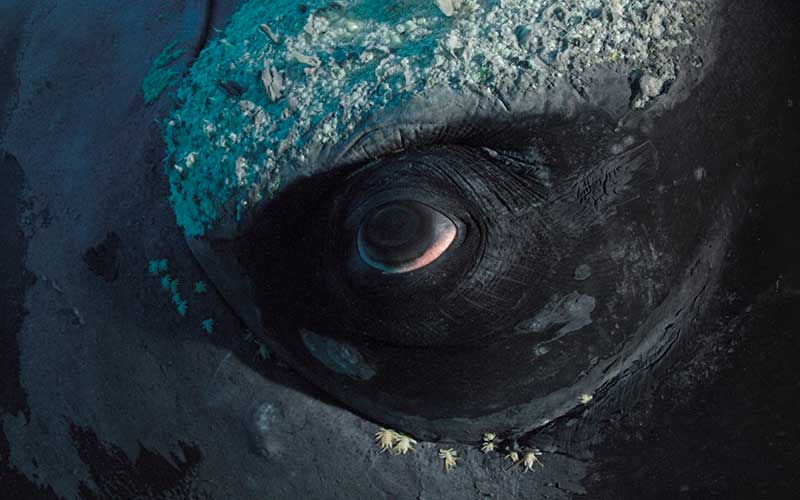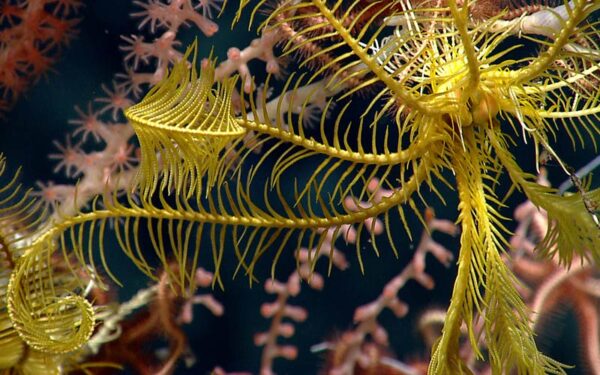
Accidental vessel strikes account for nearly half of all North Atlantic right whales deaths. So why is NOAA dragging its feet in tacking action to prevent them? Photo: Brian Skerry
Imagine that it’s 2008. You visit the dentist to put a stop to excruciating pain in your mouth. Your dentist finds multiple cavities, sores, and other problems. Yet, you get no treatment plan. Over the years, you continue to visit the dentist, only to get temporary fixes that do nothing to stop the pain.
Now, for the last year, you have been writhing in agony. Desperate for a solution, you reach out to your dentist one more time. What do you get? Pages and pages of x-rays, a long report explaining that’s wrong with your tooth (which you already knew), and a big fat bill. What don’t you get? A plan of action to finally fix your problem.
Sadly, critically endangered North Atlantic right whales face a situation just as frustrating – one that threatens their very existence. Regulators have known for more than 20 years that vessel strikes kill right whales at an alarming rate. But to date, they haven’t put forward a real solution. That’s why CLF and our partners are pushing federal regulators to stop talking about the problem and start solving it now.
Vessel strikes are avoidable; failing to prevent them is a travesty
Vessel strikes cause almost half of all right whale deaths (accidental entanglements in fishing gear account for the rest). Those whales that manage to survive an initial collision may later die from their wounds or bear the scars for the rest of their lives.
Since January of 2020, at least three right whale calves have been struck by passing vessels. One had already survived a ship collision before tragically being killed by a second. Another calf, just days old when struck, languished with a severe cut through its head and mouth. Unable to nurse without having the milk pour from its mouth, this little one – who has not been seen again – is assumed to have perished. Then, in February of this year, a one-month-old calf died on impact when hit by a recreational boat. Its mom, “Infinity,” was also struck and is not expected to survive.
What’s especially sad about these deaths is that they are avoidable – if only federal regulators would stop wringing their hands and instead initiate long-overdue rulemaking for further protections.
Current measures to protect right whales aren’t enough – and NOAA knows it
For more than 20 years, federal regulators at NOAA have acknowledged that accidental vessel strikes threaten the existence of the North Atlantic right whale. After years of analyzing the issue, in 2008, the agency set seasonal speed restrictions in specific areas, which temporarily dulled the threat. But, these restrictions only applied to vessels over 65 feet in length. Outside of those speed-restriction zones, vessels were asked, but not required, to slow down – even though right whales were known to be at risk in those areas, too.
While right whales continued to be wounded and killed, NOAA put out more studies. These studies concluded that voluntary measures don’t work. They also found that vessels under 65 feet are also hitting whales, endangering the whale and risking the safety of their passengers. (The boat that accidentally struck Infinity and her newborn was 54 feet long. After hitting the whales, the captain was forced to ground the boat to stop it from sinking, and its passengers had to be rescued).
Right whales need immediate action from NOAA, now
These are avoidable tragedies. That’s why Conservation Law Foundation and our partners pushed NOAA to take immediate action to prevent them in August of last year.
Based on the agency’s own data, we urged NOAA to create a new rule to protect right whales that would:
- Include smaller vessels (under 65 feet);
- Make voluntary measures mandatory; and
- Implement additional speed restriction areas down the Eastern Seaboard when right whales are present.
However, NOAA didn’t respond. In January, CLF and our partners sued the agency to force regulators to take action.
Right whales got another report instead
Shortly after we filed our lawsuit, NOAA released a 53-page report outlining all of the ways that the current regulation doesn’t work – which it knew already. The agency also provided 77 pages of facts and figures and an 87-page economic analysis of the 2008 vessel speed rule. Despite the report supporting our request for action, it did not provide any proposed solutions. There was no plan or timeline to put an end to the threat from vessel strikes.
Vessel strikes can be avoided. We are pushing NOAA to take action.
Now, the government is trying to dismiss our lawsuit by pointing us to the recommendations in their report – which just confirm what we already knew about vessel strikes. So, we are challenging the agency’s motion to dismiss our lawsuit. And we will keep putting pressure on the agency to come up with real measures on the water to protect North Atlantic right whales from vessel strikes.
Right whales don’t need more consultations or diagnoses; they need an immediate treatment plan. The longer that plan is delayed, the more right whales will be killed or suffer painful injuries unnecessarily.
Regulators have already taken some actions to protect North Atlantic right whales from other threats, such as accidental entanglements in fishing gear. And the fishing communities are being forced to make changes to their gear to better safeguard the species’ future. We should ask just as much, if not more, when it comes to vessel speed regulations.
North Atlantic right whales are in New England waters now. If you see one, slow down and keep your distance. Federal law requires vessels, paddle boarders, and aircraft (including drones) to stay at least 500 yards away. You can also help by reporting whale sightings through the WhaleAlert app or via phone at 866.755.6622.
An earlier version of this blog was published on March 19th, 2021.
[widget id=”clf_cta_widget-6″]



